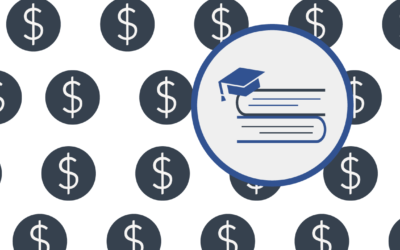Key Points
- A proposed new student loan cap would tie borrowing limits to a national median cost of attendance by program.
- That formula automatically underfunds at least half of students who attend above-median cost programs.
- Families in high-cost areas or at private institutions could see the largest funding gaps.
A new student loan cap formula making its way through Congress aims to solve rising college debt by tying borrowing limits to the “median cost of attendance” for a student’s chosen program. But since “median” is the middle number – this formula would automatically prevent 50% of students from borrowing for the cost of their program.
Under the Big Beautiful Bill by the House, federal student loan caps would no longer be set as fixed amounts for undergraduates and graduates. Instead, borrowing would be limited to the national median cost for a student’s program of study, minus any Pell Grant the student receives.
That shift could create new affordability problems, especially for students in high-cost regions or attending private institutions, where tuition and housing costs regularly exceed the national median.
Even if colleges reduce costs, since the formula is tied to the median cost, it will always “never be enough” funding for 50% of students.
Would you like to save this?
A Median That Leaves Many Short
Tying borrowing to the national median cost sounds logical on paper. But by definition, half of all schools in the country charge more than the median, and about half of students are enrolled in them.
Furthermore, there is not a lot of data that currently exists to even find the median cost of attendance by program nationwide. And with the cuts at the Department of Education, it’s unknown if this data can be put together in a reasonable period of time.
In 2024, the average cost of attendance at a public four year college was $29,910. But that’s average. And overall.
Private colleges can cost two to three times more. Two year colleges significantly less.
Figuring out a program-level median cost, and then trying to navigate other expenses like housing, will be a nightmare.
It also means that two students at the same school could have different borrowing limits…
Families who pick above-median programs will either need to come up with the shortfall on their own or forgo those options altogether. And while the new loan formula still allows Pell Grants to be subtracted from that cap, the proposal also places new restrictions on Pell eligibility tied to the Student Aid Index (SAI), which may exclude some low and middle income families from receiving help.
@thecollegeinvestor Replying to @emilysteped How the new cost of attendance student loan cap would work for students. #studentloans #financialaid #college #education ♬ original sound – The College Investor
Borrowers In High Cost Regions Could Face Bigger Gaps
College costs vary widely by geography. A student attending school in California, New York, or Washington, D.C., will almost always face higher tuition and housing costs than a peer in Mississippi or Montana.
If both students pursue the same degree, say, a business or engineering program, but the federal loan cap is based on the national median cost, the student in the higher-cost region is automatically at a disadvantage.
Even if the program costs the same, housing costs could put that same student at a disadvantage.
The problem gets worse for students who don’t receive full Pell Grant coverage or who have no access to family savings. While the legislation does allow schools to set lower borrowing caps, there is no provision to allow schools or states to raise them above the federal median.
Public colleges in expensive regions may find themselves unable to attract students who need loans to cover the full cost of attendance. Private colleges may be hit even harder, especially smaller institutions that are already struggling.
Design Matters
The national median cost of attendance formula introduces a new kind of cap into federal loan policy.
Policymakers have argued for years that current loan caps are too high, allowing students to over-borrow for low-value programs. But a median-based cap flips the problem: it guarantees that 50% of students won’t have enough loan eligibility to cover the full cost of their education.
In effect, this proposal presumes that access to college will adjust to the median, rather than the other way around. Families are expected to close the gap through private loans, savings, or by choosing less expensive programs.
But that presumes those choices exist. Low-income students, rural families, and first-generation college-goers often pick schools based on where they were accepted or what housing support is available. Cutting off access to federal loans based on a national median could result in students turning down their preferred program or dropping out entirely.
Furthermore, even if colleges adapt and lower prices… it still doesn’t change the formula excluding 50% of borrowers.
The formula builds a fixed outcome into federal policy: if borrowing is tied to the median, there will always be half of students who are above the funding line. Students at below-median-cost programs will be able to borrow up to their full cost of attendance. Those above the line will have to scramble to find other funding or take on more expensive private debt.
That division hits graduate students especially hard. Under the same proposal, Grad PLUS loans would end starting in 2026. That leaves only unsubsidized loans, subject to the same median cost formula, for students pursuing advanced degrees.
With no credit-based Grad PLUS loans to make up the difference, students attending pricier professional programs in law, medicine, or business could see borrowing gaps of $30,000 or more per year.
What Families Can Do Now
While this proposal is still working its way through Congress, families with younger children may want to pay attention to how loan limits could shift.
If enacted, the new borrowing caps and the median cost formula could reshape how students choose schools, how colleges price programs, and who ends up finishing a degree.
For more context on how these changes affect families, borrowers, and colleges, see our full breakdown of the winners and losers under the Big Beautiful Bill.
Don’t Miss These Other Stories:
Grad PLUS Loans Could Be Ending In 2026
Congress Moves Forward Changes To Student Loans And More
Student Loan Borrowing Limits For 2025 And 2026
Editor: Colin Graves
The post New Student Loan Caps Could Always Leave Students Short appeared first on The College Investor.






0 Comments